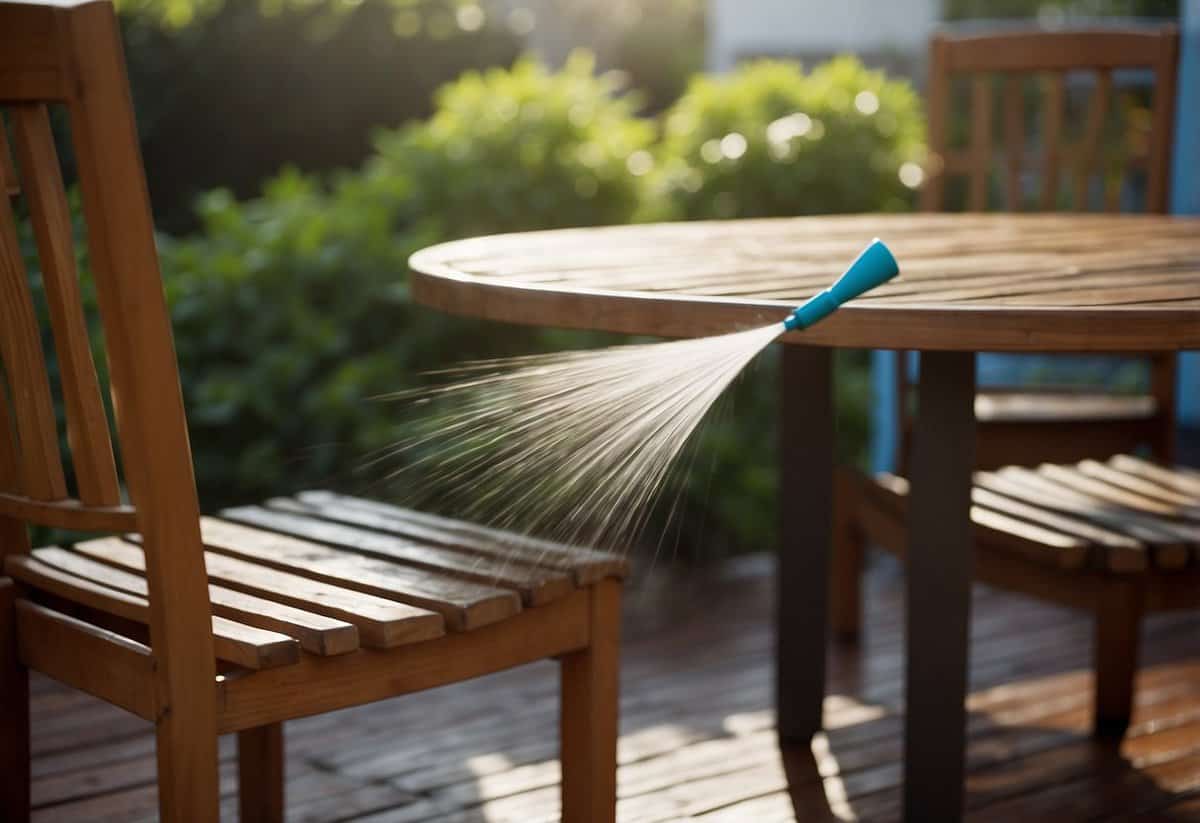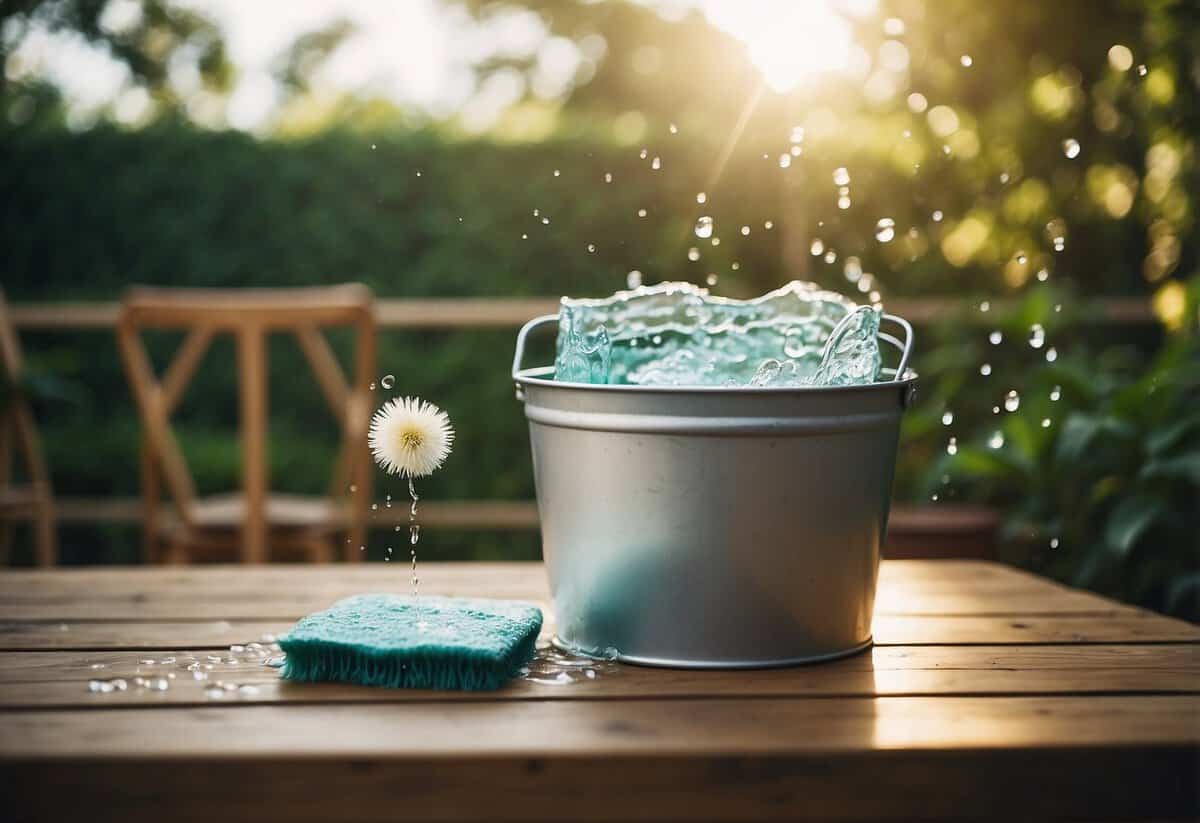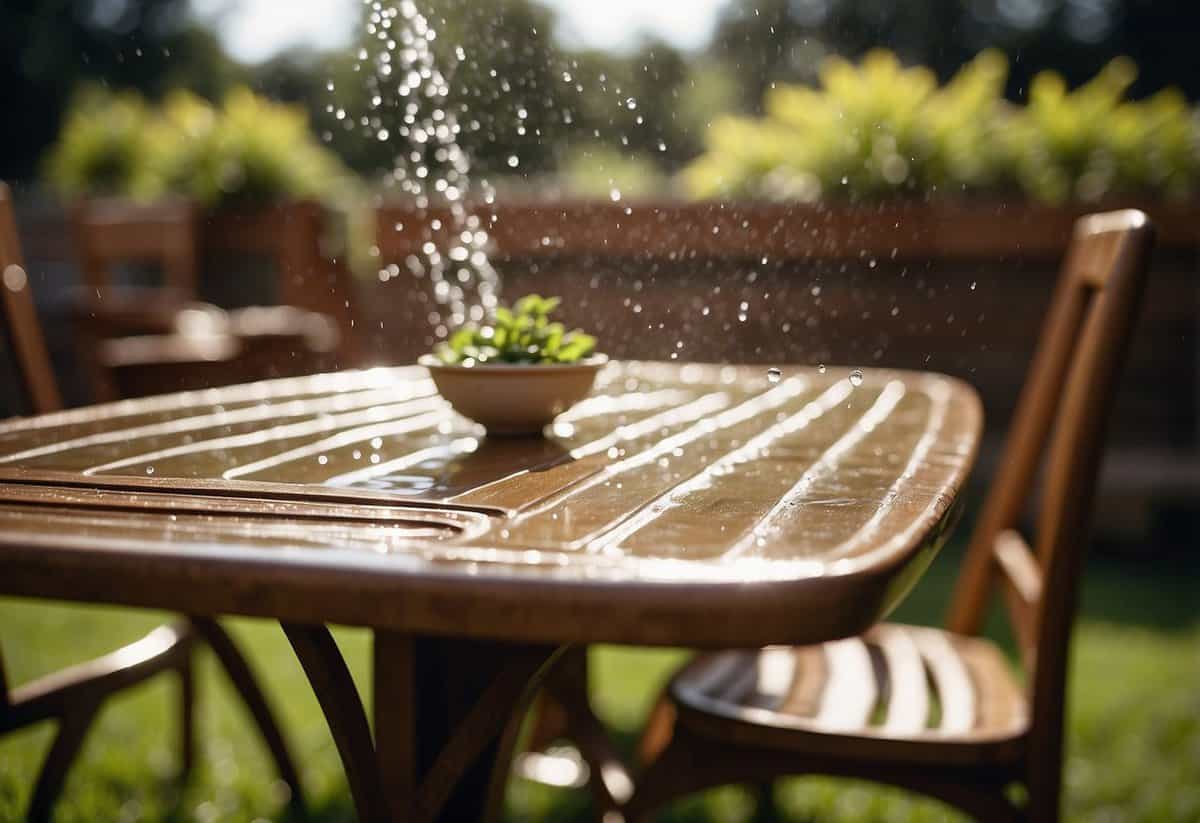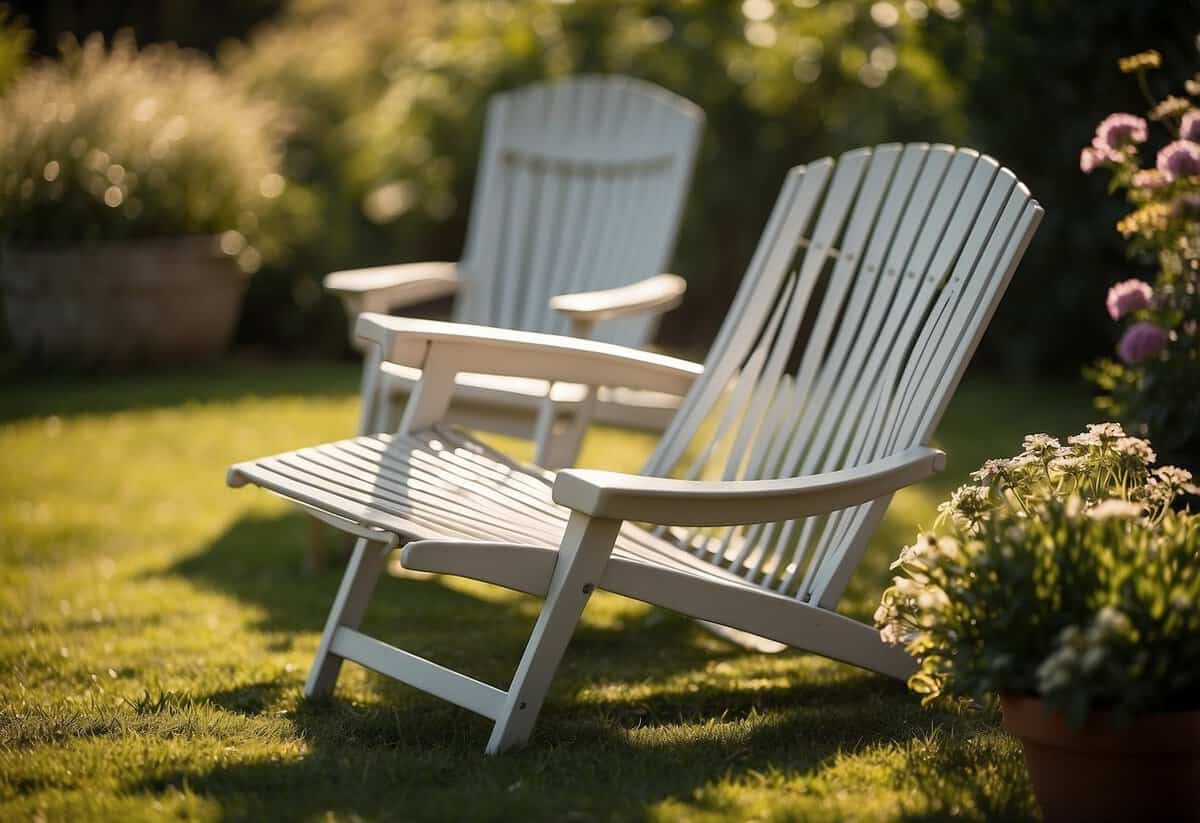Tips for Cleaning Garden Furniture: Easy and Effective Methods
Cleaning your garden furniture can feel like a daunting task, but it’s essential for keeping your outdoor space inviting and enjoyable. Whether your furniture is made of plastic, wood, or metal, regular maintenance will help it last longer and look better. By following simple and effective cleaning tips, you can ensure your furniture stays in top shape all season long.

A clean, well-cared-for patio not only extends the life of your furniture but also enhances your outdoor experience. With a little effort, you can remove grime, stains, and weather build-up. Soon, your garden will be a comfortable and welcoming space for relaxation and entertaining.
1) Use a gentle soap solution

A gentle soap solution is great for cleaning garden furniture. Mix a few drops of dish soap with warm water. This simple mixture can clean most materials without causing damage.
Dip a sponge or soft brush into the soap solution. Scrub the furniture gently to remove dirt and grime. Rinse off any soap residue with clean water. Let the furniture air dry in a well-ventilated area.
2) Avoid Abrasive Cleaners

It’s important to avoid abrasive cleaners when cleaning garden furniture. Abrasive materials can scratch surfaces, making your furniture look worn and damaged.
For plastic furniture, use a soft cloth with mild soap and water. For metal furniture, a non-abrasive sponge is ideal.
Wooden and wicker furniture needs gentle care. Avoid scrubbing too hard as this can ruin the finish. Instead, use a soft brush or cloth to gently remove dirt and grime. Be kind to your furniture, and it will last longer!
3) Clean with a Soft Brush

Cleaning garden furniture with a soft brush is gentle on surfaces.
Using a soft bristle brush, scrub wood or metal furniture with hot, soapy water to remove dirt.
Avoid using abrasive brushes on plastic or wicker. They can scratch and damage these materials.
For stubborn spots, a mild detergent combined with a soft brush can be very effective.
Don’t forget to rinse thoroughly after scrubbing.
4) Rinse thoroughly with water

After scrubbing your garden furniture, it’s important to rinse it thoroughly with water. This ensures that no soap residue is left behind.
Use a garden hose on a gentle setting. Avoid high pressure, as this can damage the surface of your furniture.
Make sure to rinse all parts, including crevices and corners, to get rid of all cleaning agents.
5) Dry Completely to Prevent Rust

After cleaning your garden furniture, it’s important to dry it completely. Water left on metal surfaces can cause rust.
Use a soft cloth to wipe down the furniture. Make sure to get into all the nooks and crannies.
For extra protection, let the furniture air dry in the sun. This helps ensure all moisture is removed. By keeping your furniture dry, you can prevent rust and extend its life.
6) Use Vinegar for Stubborn Stains

For those stubborn stains on your garden furniture, vinegar can be a real lifesaver.
Mix one cup of white vinegar with a gallon of water. Use a spray bottle to apply this solution directly to the stains.
Let it sit for a few minutes. Then, scrub gently with a soft brush. This method works well on various materials like plastic, wood, metal, and fabric.
Dry the furniture with a soft cloth after rinsing. For added freshness, you can add essential oils to the vinegar mix to mask the smell.
7) Apply protective furniture wax

Applying protective wax can help your garden furniture last longer.
First, make sure the furniture is clean and dry. Use a paintbrush to apply the first coat of wax, following the grain of the wood.
Let the wax dry completely. Then, use a clean cloth to buff the wax. This will give your furniture a nice shine and extra protection. For more details, check out this guide on waxing furniture.
8) Store cushions separately

Storing garden furniture cushions properly helps them last longer. After cleaning and drying, keep cushions in a cool, dry place. This keeps them fresh and ready to use next season.
Use a storage box or a bag to protect them from dust and moisture. Avoid storing them in damp areas like basements as moisture can cause mold and mildew.
Check for any signs of damage or wear before storing. If you notice any, fix them right away. This way, your cushions will stay in great shape, ready for your next outdoor gathering. For more details, visit this guide.
9) Use covers during off-season

When your garden furniture isn’t in use, it’s a good idea to cover it. Using covers helps protect furniture from harsh weather. Rain, snow, and even sun can damage your outdoor furniture.
Make sure the covers fit well. A snug fit keeps dirt and moisture out. Look for covers that are water-resistant and easy to secure.
Before covering, clean the furniture. Removing dust and grime will keep it in better shape. Check out these tips for cleaning patio furniture covers to maintain them properly.
10) Clean Glass Surfaces with Vinegar and Water

To clean glass surfaces, mix one cup of white vinegar with one cup of distilled water.
Pour the mixture into a spray bottle.
Spray the solution onto the glass and wipe it with a microfiber cloth.
For a fresh scent, you can add a few drops of essential oil, like lavender.
This helps mask the vinegar smell.
Use this method to keep your windows and glass tables sparkling clean.
Vinegar’s natural acidity breaks down dirt and streaks easily.
Proper Cleaning Methods

To keep garden furniture looking great, it’s important to use the right cleaning techniques. Natural cleaners can be effective, and avoiding harsh chemicals helps to protect the materials.
Using Natural Cleaners
Natural cleaners are often the best choice for garden furniture. Mixing dishwashing detergent with warm water can help with tough stains. For a more gentle option, try mixing vinegar with warm water for colored plastic furniture.
Natural oxygen bleach can work well on cushions. Before using it, test on a small area to ensure it doesn’t cause discoloration. Apply the solution and let it sit for 30 minutes. Then, scrub with a soft brush or sponge, rinse with clean water, and let it air dry.
For wicker furniture, use a soft brush or cloth to remove dirt and debris. Mix mild soap with water and gently scrub the affected areas. Avoid using too much water to prevent the wicker from warping.
Avoiding Harsh Chemicals
Harsh chemicals can damage garden furniture. Chlorine and bleach should be avoided on white plastic furniture as they can eat away at the material. Instead, use milder solutions like those mentioned above.
Pressure washers are not recommended for cleaning garden furniture. The force of the water can strip the finish and damage the material, so use them only on surfaces like your deck.
Remember, proper cleaning methods help extend the life of your outdoor furniture and keep it looking its best. Using the right products and techniques makes a big difference.
Maintenance Tips

Proper maintenance of your garden furniture ensures it stays in excellent condition and lasts longer. Focusing on protection from weather elements and setting up a regular cleaning routine are essential to keep your furniture looking great.
Protection From The Elements
To protect your garden furniture from the elements, invest in quality covers. These covers shield it from rain, sunlight, and dust. Choose covers that are water-resistant and UV-protected. If you have wooden furniture, consider applying a sealant or varnish annually. This helps prevent water damage and sun fading.
When not using the furniture during off-seasons, store it in a garage or shed. For metal furniture, check for rust and apply a rust-resistant paint if necessary. For fabric cushions, store them indoors when not in use to avoid mold and mildew. These steps keep your furniture protected and extend its life.
Regular Cleaning Schedule
A regular cleaning schedule keeps your garden furniture free from dirt and grime. For a basic clean, use mild soap and warm water. Wipe down the surfaces with a sponge or cloth. For deeper cleaning, mix a natural detergent with warm water. Avoid abrasive cleaners as these can scratch the surfaces.
For plastic or resin furniture, using an all-purpose spray cleaner works well. Rinse thoroughly with clean water and let it air dry in a well-ventilated area. If you have cushions, vacuum them regularly and wash the covers periodically. With regular care, your garden furniture will stay looking its best.







